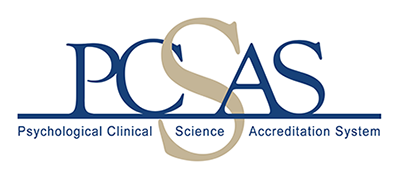by Brett Schneider, University of Wisconsin-Madison
Researchers investigating the neural underpinnings of mental illness have been developing tasks designed to capture transdiagnostic symptomology for decades. However, little to none of this work has improved the diagnosis or treatment of mental health disorders (Rogers, 2017). In this article, I will describe how clinicians and researchers can utilize objective measures to aid psychiatric diagnosis and treatment by following a neuropsychological approach to diagnosis.
Psychology and psychiatry clinics typically evaluate clients through a combination of clinician-administered interviews (e.g. Structured Clinical Interview for DSM-5), clinician-rated measures (e.g. Hamilton Rating Scale for Depression), and self-report measures (e.g. Beck Depression Inventory). However, the validity of “asking questions” to capture psychopathology has recently come into question (Pavlova & Uher, 2020). In fact, these measurement tools frequently diverge (Cuijpers et al., 2010). Measures of self-reported executive dysfunction in daily living often differ from objective executive function measures, particularly individuals with ADHD (Barkley, 2012). These discrepancies help inform the clinician as to what environmental, psychological, or biological mechanisms are leading to psychological distress for the individual. Discrepancies between objective and subjective measures can help disentangle underlying mechanisms to identify the most impactful target for intervention.
To establish the use of objective measurements beyond ADHD, clinicians should consider a re-formulation of the clinical psychology clinic in the neuropsychology model to integrate subjective and objective measurements. For example, a client reporting memory loss in a neurology clinic would not receive a neurocognitive disorder diagnosis through interview alone. In fact, subjective cognitive decline alone may or may not predict future decline or current pathology (Rabin et al., 2017). Objective testing is a necessary component of the neuropsychological evaluation that the clinician uses to differentiate the mechanisms leading to similar patient presentations. Memory involves numerous processes (e.g., encoding, storage, and retrieval) which depend on overlapping and distinct brain structures. The performance of the patient in each of these processes informs the clinician on the function or dysfunction in the underlying brain structures. An individual with rapid forgetting but intact immediate retrieval is more likely to have Alzheimer’s Disease impacting the hippocampus, while difficulty encoding but intact retrieving may have vascular disease disrupting white matter function (Morgan & Ricker, 2016). This difference in diagnosis directly informs the brain structures and component of memory to target with interventions.
Psychologists have access to numerous objective and neuroanatomically informed measures of psychopathology developed by researchers. To give one example, the neural system of anhedonia, and reward processing generally, has been a frequent area of study for neuroscientific studies of mental illness (Zald & Treadway, 2017). The Effort Expenditure for Rewards Task (EEfRT), is particularly well-suited to objectively measure anhedonia across disorders, and correlates with well-defined reward neural circuitry (Thomsen, 2015; Treadway et al., 2009). Administering this objective measurement in clinic to supplement self-report measures would allow a clinician to approximate the functioning of the underlying neural circuitry sub-serving this reward function and the combination of these two measures can be used to personalize the treatments available to clients.
A broader change in the diagnostic model would incorporate other empirically supported measurements of psychopathology with clear neuroanatomical correlates. The previous decades of research have provided ample evidence for tasks sensitive to transdiagnostic symptomology and underlying brain function, with little translation into the clinic. I believe translating this research into biologically informed objective measurements can improve diagnosis and personalize interventions.
___________________________________________________________________________________
References
Barkley, R. A. (2012). Executive functions: What they are, how they work, and why they evolved. Guilford Press.
Cuijpers, P., Li, J., Hofmann, S. G., & Andersson, G. (2010). Self-reported versus clinician-rated symptoms of depression as outcome measures in psychotherapy research on depression: A meta-analysis. Clinical Psychology Review, 30(6), 768–778.
Morgan, J. E., & Ricker, J. H. (2016). Textbook of clinical neuropsychology. Taylor & Francis.
Pavlova, B., & Uher, R. (2020). Assessment of Psychopathology: Is Asking Questions Good Enough? JAMA Psychiatry, 77(6), 557–558.
Rabin, L. A., Smart, C. M., & Amariglio, R. E. (2017). Subjective Cognitive Decline in Preclinical Alzheimer’s Disease. Annual Review of Clinical Psychology, 13(1).
Rogers, A. (2017). Star neuroscientist Tom Insel leaves the Google-spawned verily for… a Startup. Wired. Retrieved from Https://Www. Wired. Com/2017/05/Star-Neuroscientist-Tom-Insel-Leaves-Google-Spawned-Verily-Startup.
Thomsen, K. R. (2015). Measuring anhedonia: impaired ability to pursue, experience, and learn about reward. Frontiers in Psychology, 6(September), 1–11.
Treadway, M. T., Buckholtz, J. W., Schwartzman, A. N., Lambert, W. E., & Zald, D. H. (2009). Worth the “EEfRT”? The effort expenditure for rewards task as an objective measure of motivation and anhedonia. PLoS ONE, 4(8), 1–9.
Zald, D. H., & Treadway, M. T. (2017). Reward Processing, Neuroeconomics, and Psychopathology. Annu. Rev. Clin. Psychol, 13, 471–495.
Disclaimer: The views and opinions expressed in this newsletter are those of the authors alone and do not necessarily reflect the official policy or position of the Psychological Clinical Science Accreditation System (PCSAS).


